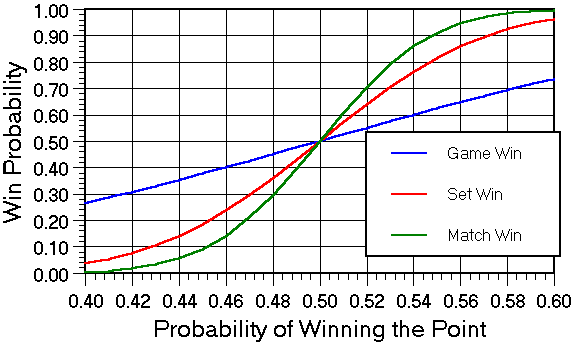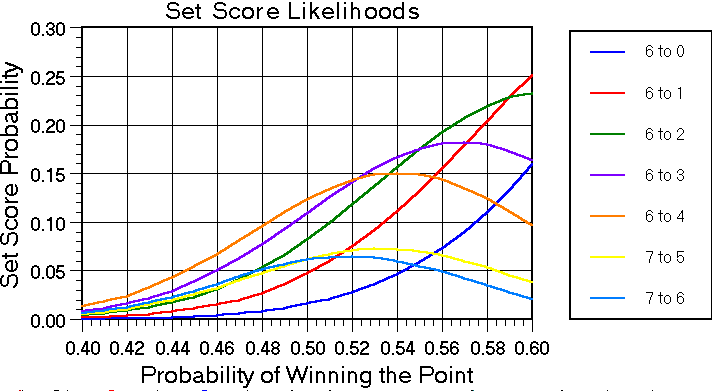

Of course, your probability of winning the next point is generally not invariant throughout the match. It can depend upon your physical and emotional stamina relative to that of your opponent, your ability to play the critical points, and, of course, whether you are serving or receiving. Such issues, particularly the latter, are of much greater importance for matches of high skill level. The majority of players do not possess a dominant serve, and the probability of winning the next point should not vary too much throughout the play. When it does depend upon who is serving, an average probability can be assumed, averaging the separate probabilities associated with serving or receiving. This should still yield effective results for most cases.
Th first figure below illustrates the key results of this analysis. As an example, suppose that your average probability of winning a tennis point is 0.54, or 54%. This means that your opponent's chance is 46%, so that, on the average, you score about 17% more winners than he/she does. This figure now indicates that your likelihood of winning a given tennis game is about 0.60, or 60%. Your chances of winning a given set improve to about 76%, and your chances of becoming the match winner is 86%. Thus, despite the fact that, on the average, you score only 17% more winning points than your opponent, your chance of winning the match is almost assured.
The second figure below considers the typical set scores associated with the probability of winning a tennis point. Again focussing on the example above, the most likely set score has you winning 6 to 3, which will happen about 17% of the time. 6 to 2 and 6 to 4 follow closely behind, with 16% and 15%, resectively. Once again, a fairly modest per point advantage over your opponent yields a fairly one-sided result. Looking at it another way, your opponent, in losing 6 to 3, can at least take heart in the fact that you only scored about 17% more points than he/she did. That's really not too dominant, and just a little improvement on your opponent's part will cause you considerable trouble the next time you play.


If you enjoy dabbling in a bit of math, you might try The math behind the curves